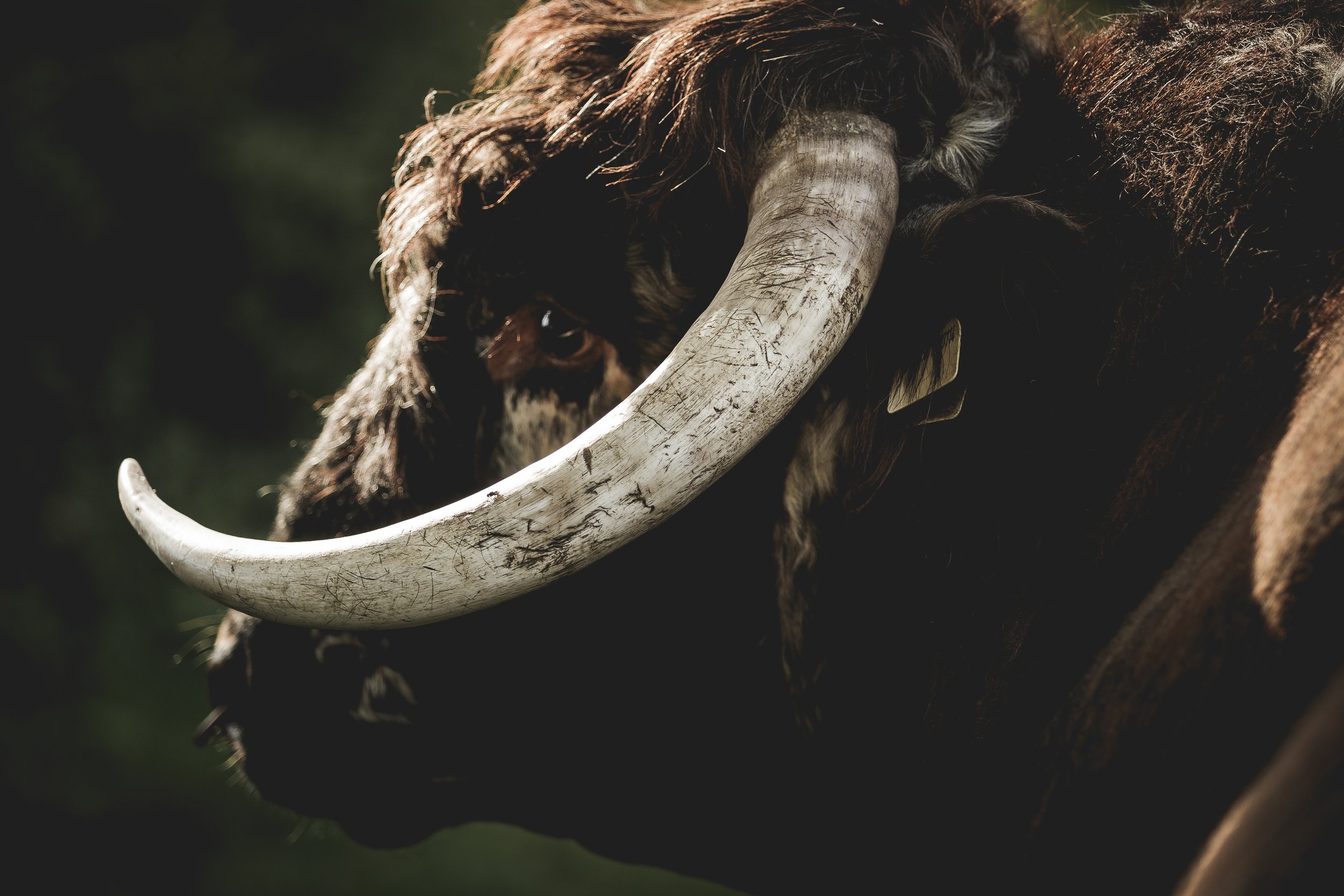A traditional and ecology friendly way of beef farming
Climate change, agriculture and animal welfare are subjects that often share the same conversation. These are all subjects that I am extremely passionate about and my interest continues to grow. The story of these images came from a chat with a friend who runs a business in Cheshire. Paul, and his brother Richard, have a business called Caddis. They specialise in tree surgery, landscaping and selling firewood. They recently moved into beef farming after a chance encounter with one of their clients. The client had land and wanted livestock to graze (manage) the land to help create a range of different wildlife habitats. Paul and Richard introduced some English Longhorn cattle. These are an old breed that are slow growing, they’re hardy and graze on mixed pasture. Because the cows are slow growing, they have a longer life than many intensively reared beef cattle. These particular cows spend most of the year outside and when they come into the sheds for Winter they are fed on hay grown in their own meadows.
This hay hasn’t been transported for miles and the production of it causes no deforestation on the other side of the planet, so has a relatively small carbon footprint for beef farming. The hay needs to be harvested for next year’s seeds to germinate and the meadow to continue to provide the diverse habitats and pollinating offerings every year. The cows are moved around the fields which allows the land to rest and no areas are then overgrazed. No fertilisers, pesticides or herbicides are used so there are reduced input cost for the farmers and the cows aren’t consuming weedkiller which is then passed into our system and digested by us.
The tapestry of wildlife that lives in these fields is huge. We all know about the plight that pollinators are in and the long term sufferer of this will ultimately be us as we need them to pollinate our food. As well as bee food, the field offer habitats to a range of insects that in turn feed birds and bats. The long grass provides habitat for mice and voles that feed birds of prey and ground predators.
Now I’m no farmer. I’ve lived in the rural landscape for a few years and know several farmers. My information may well not be correct on many things, but what my interest has done is make me explore where our food comes from. I’ve seen intensive farming and animals that spend their lives in sheds and on concrete floors before they go to slaughter at an early age. I’m not preaching or saying what is right or wrong, we all have different opinions. People need feeding and farmers need to make a living, but isn’t it time to start exploring how we can live in a more sustainable way? Our buying habits and need for cheaper food has driven us down the food production route that we are now in, so any change starts with us.
There are lots of farmers working in similar ways and where we now live, in the Lake District, there are lots of farmers who have radically changed the way they farm and now live in farms that make money and are rich in biodiversity. Paul himself said this, that farming this way probably won’t feed the ever expanding population and may not be the solution but we certainly need to try something to slow down climate change and sit side by side with nature before there’s no nature left.





















